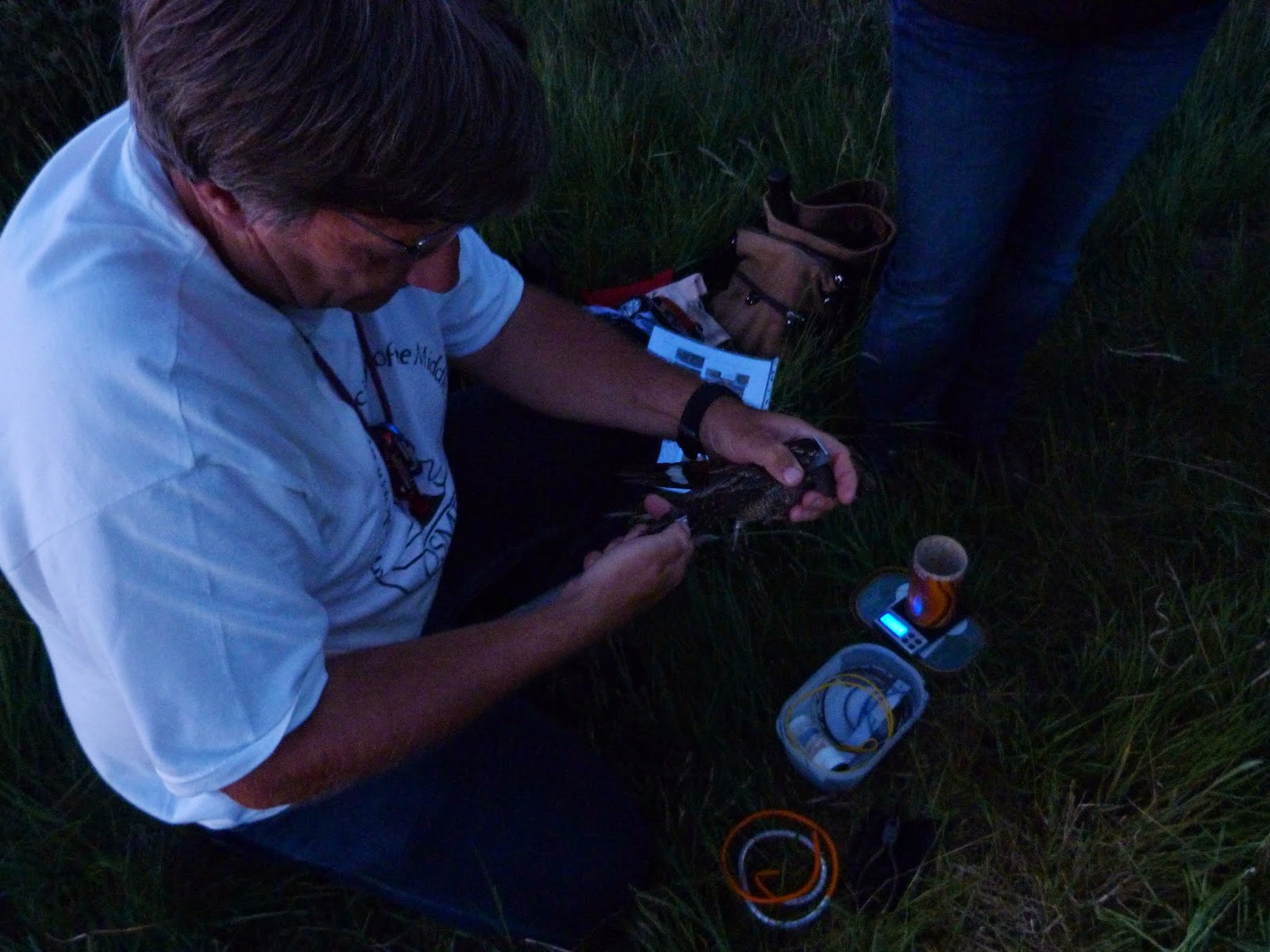It seems that we've not been out mist netting for a while now so we were very pleased to get the chance to meet up with EP and try our luck for Nightjar at Chobham.
We tried a spot close to an entrance point where the boundary was well wooded and many young silver birch dotted the common edge. We set up at a point where several paths intersected placing two doubles in close proximity and ensured that there was no disturbancere to areas of heather.
A brief burst of churring was heard at about 20.15 before the nets were fully set and while it was still full daylight.
As the light dimmed we noticed a Woodcock flying along the tree line, then began to hear and see Nightjars, flying low through the vegetation. It was difficult to assess how many, but there were at least three seen at one time.

We usually leave attempts for Nightjar until later in the Summer but this session seems to indicate that earlier sorties are definitely worthwhile.
Totals: 2
Nightjar - 2
We tried a spot close to an entrance point where the boundary was well wooded and many young silver birch dotted the common edge. We set up at a point where several paths intersected placing two doubles in close proximity and ensured that there was no disturbancere to areas of heather.
A brief burst of churring was heard at about 20.15 before the nets were fully set and while it was still full daylight.
As the light dimmed we noticed a Woodcock flying along the tree line, then began to hear and see Nightjars, flying low through the vegetation. It was difficult to assess how many, but there were at least three seen at one time.
Birds started to emerge as the light failed.
The near full moon cast its light on the nets but didn't seem to matter.

No flash needed as processing begins.
The first bird was processed at 21.50 before we lost the last of the light. It was a 6M.
Diagnostic white wing spots of a full male.
This bird had a greyish cast on the back and top of the head. Whiskers growing around the maw, are an adaptation for nocturnal feeding. The large eyes utilise the available light but are laterally placed so can not pick up insects directly in front of the bird's head. Whiskers provide sensory information to help the bird target and catch flying moths and insects.
Ringed, processed and ready for release.
We couldn't believe our luck. To have made a capture in a location that we'd not even reccied since the birds arrived. The birds quietened down and seemed to have moved off but there was to be a second capture at 22.40. This was another male - with wing spots that were partly brown and partly white. The white on the tail clinched identification as a 5M.
Photo does not fully convey colour of wing flashes.
This bird had a mainly brown cast with clear white tail spots.
The second capture of the night.
On going to the nets to take down we found a bat in each. We were surprised to find that the first had been caught at less than a metre above the ground. Thankfully, we were able to turn it out of the net quite easily. We were reluctant to extract in the conventional way since the wing membrane is so delicate, added to the fact that some bats in the UK have been shown to carry rabies.
The second double had also captured a bat. We are unsure of the species - well, it's not our area of expertise. Thankfully it also stopped gripping the net once the material was cleared away and it flew off.
Totals: 2
Nightjar - 2









